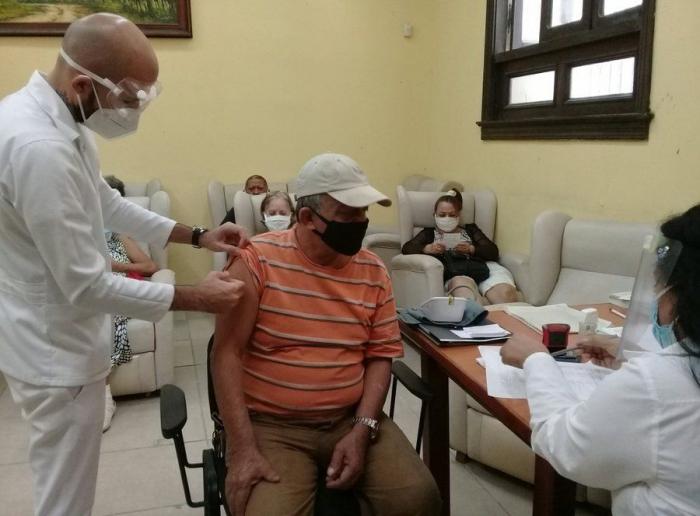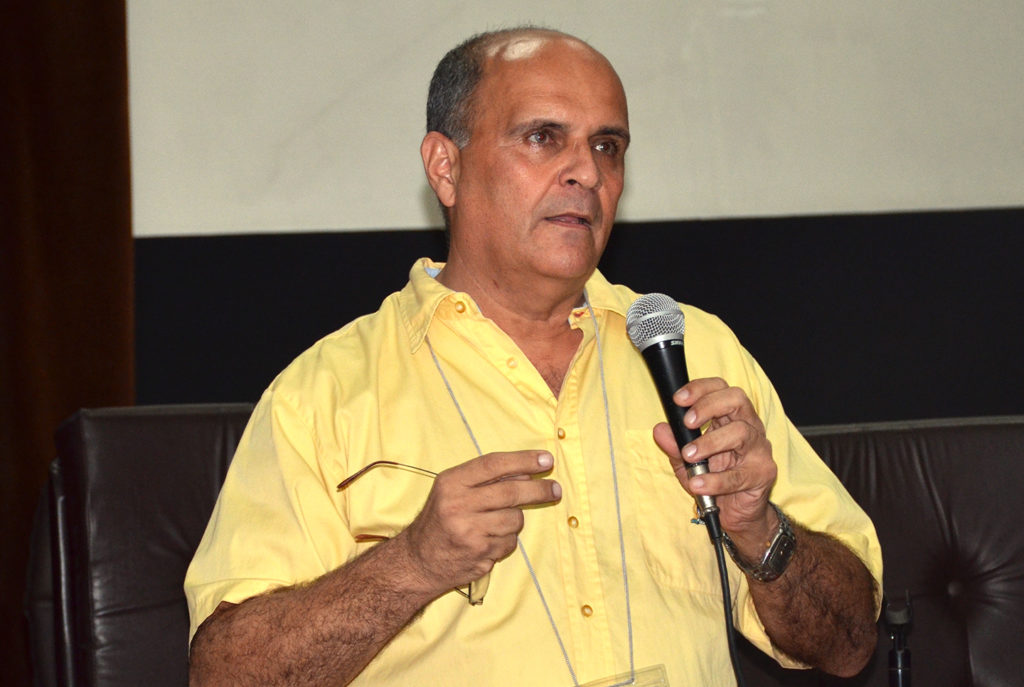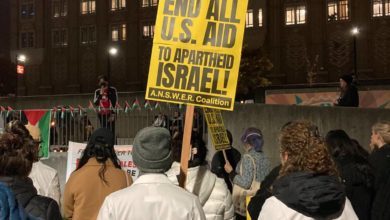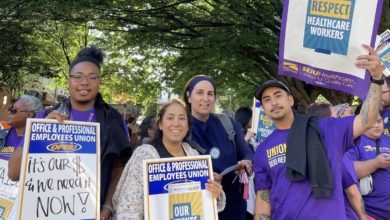Feature image: BioCubaFarma
With impressive organization, Cuba completed the first week of Phase 3 testing of its “Soberana02” vaccine. Granma newspaper reports that almost 5,000 volunteers between 19 and 80 years old were administered the Soberana02 vaccine. Some 85,000 volunteers in total in the provinces of Havana, Guantánamo and Santiago de Cuba will be vaccinated with Soberana02. There are four other Cuban vaccines in various stages of development, with Abdala being the next in line.

Despite the most severe blockade conditions imposed by the U.S. government, Cuba’s biotechnology and pharmaceutical industries have made outstanding achievements in the campaign to overcome COVID-19. It is thanks to their concentration and coordination of scientists, doctors and production workers, with full backing by the government.
Cuban President Miguel Díaz-Canel announced that all 11.3 million Cubans will be vaccinated in 2021. And Cuba plans to produce 100 million vaccines to share with the world, the way it has shared its doctors and nurses for almost 60 years. During the COVID crisis, 43 countries have benefited from Cuban doctors’ help.
Scientific prowess despite the blockade
For more than a year, Cuba has endured a major loss of income from the shutdown of its tourism industry in its campaign to prevent the spread of the virus. Yet, from the beginning of the pandemic, the government, health care system and society at large, worked together to educate and maintain restrictions to prevent the spread. There was no debate about the need to wear a mask and socially distance, the message and policy were universal. As a result, 380 people, have died of the virus with 63,725 resulting positive.
Cuba’s death rate from COVID-19 is less than 1% that of the U.S.
In the last four years, the Trump administration signed more 242 measures against Cuba, from banning remittances by Cubans in the United States to their families on the island ($1.5 billion by 700,000 people in 2019), banning flights, blocking Venezuelan oil shipments to the island, to working nonstop to force other countries not to accept Cuba’s medical help.
None of the anti-Cuba blockade measures have been rescinded by President Biden yet, despite the severity of the blockade’s harmful effects to the economy and people.
From adversity to a biotechnology powerhouse
Cuba’s biotechnology and genetic engineering that have brought five vaccines to fruition did not arise spontaneously. It began in 1980 with a bold initiative led by Cuba’s revolutionary leader Fidel Castro, and the Revolution’s historic national health care industry.
Cuba’s biotechnology industry was born in the depths of the Special Period of the 1990s, when the country’s production fell 34.5% from 1989 to 1993. Due to the rightward turn in the Soviet Union under Mikhail Gorbachev, just before its demise in December 1991, 85% of Cuba’s imports with the socialist camp of the USSR and Eastern Europe were cut off virtually overnight. Cuba embarked on a massive economic drive for new sources of income and scientific innovation.
Cuba’s historic leader Fidel Castro proposed a scientific project that quickly evolved into Cuba’s biotechnology and genetic engineering institutions. With the ratcheting up of the U.S. blockade by the 1992 Torricelli law, and later the 1996 Helms-Burton law, Cuba backed the scientists and researchers to create scientific innovation that also provide an essential source of income.

Dr. Manuel Raices Pérez Castañeda explained this history to a U.S. delegation as we visited the Center for Genetic Engineering and Biotechnology (CIGB) in Havana in late 2017.
“It began in 1980, when Dr. R. Lee Clark, a famous U.S. oncologist doing vanguard research with Interferon for certain types of cancer, gave a conference on his work in Cuba. Fidel asked for a meeting with him and he convinced Dr. Clark to accept two Cuban scientists to his facilities in Houston, Texas, to understand Interferon.” Clark was the founder of the renowned M.D. Anderson Cancer Center in Houston.
Dr. Raíces continued: “When the scientists returned from Houston, Fidel asked them how he produces Interferon. They said, ‘Comandante, he doesn’t produce it. He has a friend in Finland who sends him the Interferon that he needs.’ The next week in Helsinki, the Cuban ambassador gave the Finnish doctor, Kari Cantell, a letter from Fidel asking if he would accept Cuban doctors to come to Finland for two months.
“When they returned, Fidel showed them a facility he ordered built for their research and they started the next day. Their first batch of Interferon was sent to Finland. Dr. Cantell remarked that it was very good quality. The very first Cuban research center began in 1982. By 1983, Cuba became the fourth country in the world to develop genetic engineering.”
The success of Cuba’s remarkable COVID vaccine development is its “closed cycle strategy, with fully integrated institutions from research to post-marketing follow up. Instead of the brutal and individualistic competition in the United States, where the people of New York doing research don’t speak to those in California, we have national collaboration. In Cuba, the first priority is not to make money but to have a social impact. The only competition is a race to improve humanity’s condition.”
Cuba’s socialism is proof that only a health care and science system not motivated by profit is capable of achieving what Cuba is proudly proclaiming to the world, its Soberana 02 vaccine, with more advances to come. It is why we must organize and struggle against the genocidal U.S. blockade in the United States and around the world.





